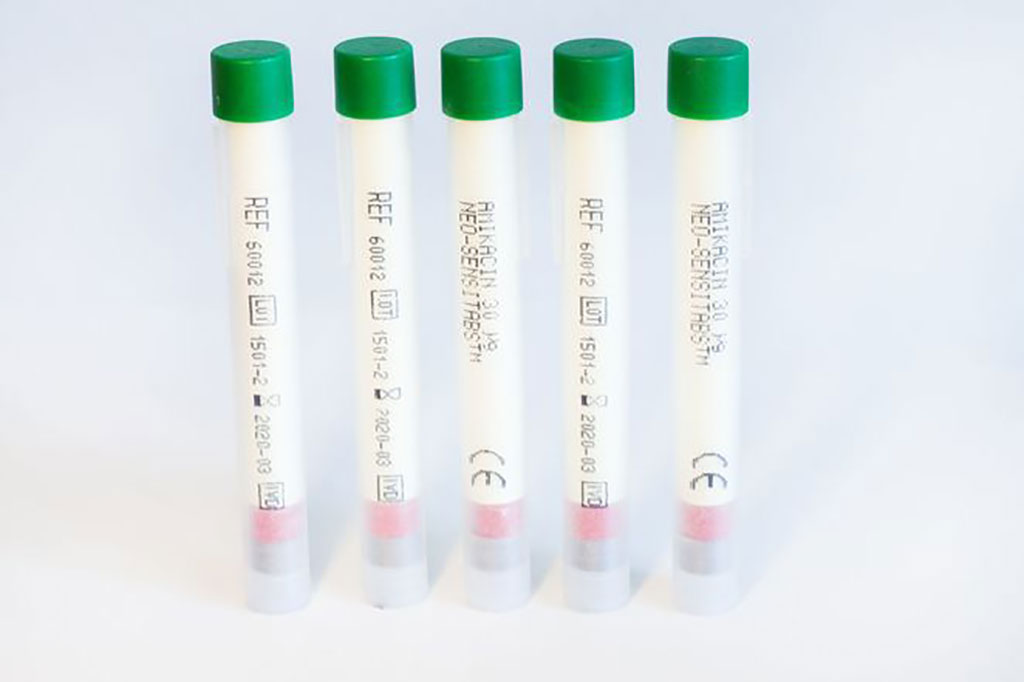ECOFF and AST Determined for Invasive Non-Typhoidal Salmonella
Posted on 05 Jul 2022
Invasive non-typhoidal Salmonella (iNTS) are a primary cause of bloodstream infections in low-resource settings (LRS).The global burden has been estimated at 535,000 iNTS cases and 77,500 deaths per year. In sub-Saharan Africa, most iNTS are multidrug-resistant and non-susceptibility to third generation cephalosporins and fluoroquinolones has emerged.
In this context, azithromycin is an important candidate for oral iNTS treatment. Azithromycin is effective to treat typhoid fever and has, despite missing clinical efficacy data, been recommended for (switch to) oral iNTS treatment. Nevertheless, there are no international guidelines on azithromycin antibiotic susceptibility testing (AST) and interpretation for iNTS.

Clinical Scientists at the Institute of Tropical Medicine (Antwerp, Belgium) used EUCAST ECOFFinder to determine the minimum inhibitory concentrations (MIC; obtained by broth microdilution) epidemiological cut-off (ECOFF) and corresponding disk zone diameters of 515 iNTS from blood cultures in DR Congo, Burkina Faso, Rwanda, and Cambodia. Transferable resistance mechanisms were determined by polymerase chain reaction.
MIC values were determined with the semi-automated Sensititre AST System (Sensititre Nephelometer, AIM automated inoculator & Vizion digital MIC viewing system; Thermo Fisher Scientific, Waltham, MA, USA), with customized, single lot dry Sensititre plates (serial twofold azithromycin dilutions: 0.125 – 512 mg/L. For disk diffusion, they used 15 μg azithromycin disks from different brands (Oxoid/Thermo Fisher; BD, Becton, Dickinson and Company, Franklin Lakes, NJ, USA; Rosco, Taastrup, Denmark; Liofilchem, Abruzzi, Italy) and commercially prepared Mueller-Hinton agar plates (BD) for 161 wild and 198 non-wild type iNTS.
The investigators reported that azithromycin MIC ECOFF was 16 mg/L corresponding to a 12mm zone diameter; mphA was detected in 192/197 non-wild and 0/47 wild type iNTS. Categorical agreement was excellent (≥98%) for all methods. Essential agreement was very good for agar dilution (>90%), but moderate for gradient tests (MIC80%: 52 – 71% and MIC100%: 72 – 91%). Repeatability was good for all methods/brands. Inter-reader agreement was high for broth microdilution and agar dilution (all ≤1 twofold dilution difference) and disk diffusion (>96% ≤3mm difference), but lower for gradient tests (MIC80% & MIC100%: 83 − 94% ≤1 twofold dilution difference).
The authors concluded that Azithromycin ECOFF of iNTS was 16 mg/L, i.e. equal to Salmonella Typhi. Disk diffusion is an accurate, precise, and user-friendly alternatives for agar dilution and broth microdilution. Reading gradient tests at 100% instead of 80% inhibition improved accuracy and precision. The study was published on June 20, 2022 in the journal Clinical Microbiology and Infection.
Related Links:
Institute of Tropical Medicine
Thermo Fisher Scientific
Becton, Dickinson and Company
Rosco
Liofilchem













